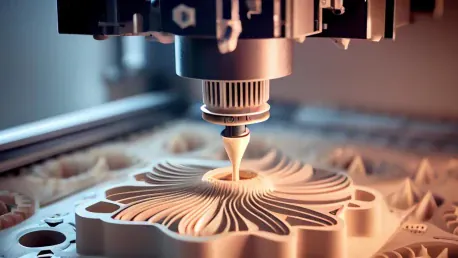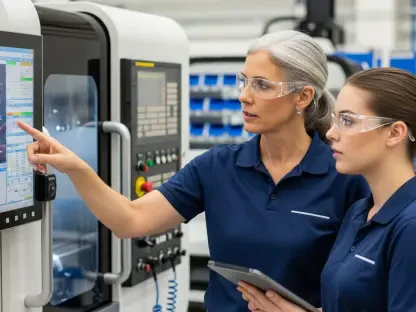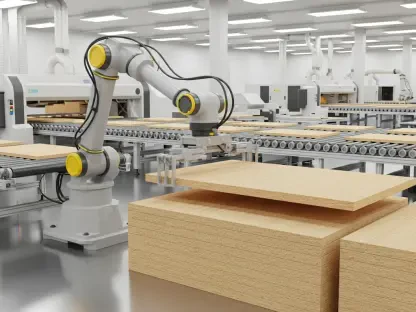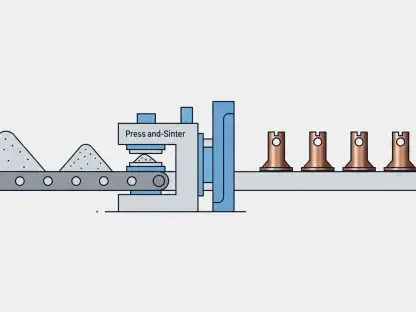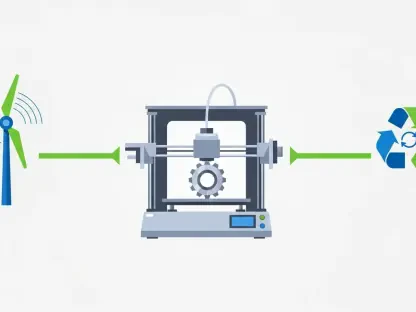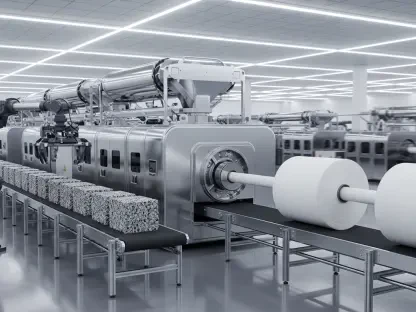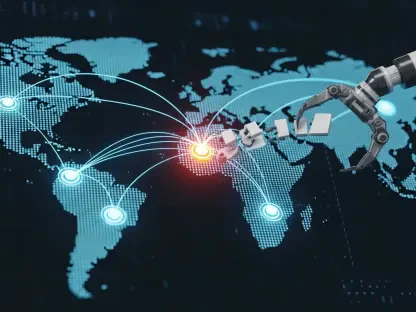The automotive industry is on the brink of a significant transformation, driven by the innovative application of 3D printing technology. Daimler Truck and Bus is at the forefront of this revolution, leveraging 3D Systems’ additive manufacturing to address the perennial challenge of spare parts supply. This approach promises to enhance the efficiency and flexibility of bus maintenance and repair operations, offering a glimpse into the future of automotive service.
The Promise of On-Demand Spare Parts Production
Reducing Time-to-Part Availability
One of the most compelling advantages of 3D printing in the automotive sector is the dramatic reduction in time-to-part availability. Traditional supply chains often involve lengthy waits for parts to be shipped from central depots, leading to extended vehicle downtime. By producing parts on-demand within repair shops, Daimler Truck and Bus aims to cut this waiting period by up to 75 percent. This improvement is expected to keep buses on the road more consistently, enhancing the operational efficiency of bus fleets.
The ability to produce parts locally means that repairs can be initiated and completed much faster, which significantly diminishes the bus fleet operators’ reliance on a complex and often cumbersome supply chain. This reduction in vehicle downtime translates to cost savings and higher fleet availability, ensuring further operational efficiencies. Notably, it is not just the speed of repairs that sees an enhancement; the quality and customization of parts can also see significant improvements when produced through 3D printing directly within the facilities where they are needed.
Cost-Effective Inventory Management
Maintaining extensive inventories of spare parts is both logistically challenging and costly. The ability to produce parts as needed eliminates the need for large stockpiles, reducing storage costs and minimizing the risk of obsolescence. This approach not only streamlines operations but also offers significant cost savings, making it an attractive proposition for bus fleet operators.
In addition, the capacity to manufacture parts locally on-demand means that inventory management becomes more precise, reducing the likelihood of excess stock and wasting resources. The traditional model, where spare parts need to be manufactured in bulk and stored until needed, often results in outdated or unused stock, which carries financial burdens. With 3D printing, spares can be produced exactly when required and in the exact quantities needed, substantially lowering overheads and contributing to a leaner, more responsive supply chain.
The Growing Adoption of 3D Printing in the Automotive Industry
Market Growth and Trends
The adoption of 3D printing technology within the automotive industry is on a rapid upward trajectory. According to MarketsandMarkets research, the automotive 3D printing market is projected to grow from $2.9 billion in 2022 to $7.9 billion by 2027, reflecting a compound annual growth rate of 21.7 percent. This growth is driven by the widespread applicability of inexpensive plastic parts, with companies like Mercedes-Benz also exploring the potential of metal part printing.
The continued innovation in 3D printing methodologies means that the applicability of these technologies broadens daily. The cost-effectiveness of plastic components is already a significant driver behind this growth, but the ever-expanding capabilities around metal parts production present a future where nearly any component can be crafted as needed. This flexibility in materials and manufacturing processes ensures that the automotive industry can address diverse and potentially complex repair and maintenance needs efficiently.
Versatility in Part Production
Daimler Buses and its certified 3D printing partners are capable of manufacturing a wide range of spare parts locally. This includes various under-hood and interior applications, such as pins, covers, and inserts. The versatility of 3D printing addresses the absence of critical components that could otherwise delay a vehicle’s return to service, ensuring that buses remain operational and efficient.
Each printed part can be tailored to meet specific requirements, integrating adaptations or improvements that are not feasible with traditional manufacturing methods. The use of certified 3D printing partners extends the operational reach of this technology, enabling a robust network of localized support for maintenance and repairs. This approach not only improves the reliability and efficiency of services but also provides a scalable solution for managing an array of part types, essential for comprehensive fleet upkeep.
Practical Applications and Future Plans
Initial Applications and Success Stories
Mercedes-Benz has already demonstrated the practical benefits of 3D printing with the SLS 380 printer, producing parts like the thermostat housing for older Unimog trucks. For buses, the company is currently focusing on printing fare collection box housings. These initial applications highlight the potential of 3D printing to address specific needs and challenges within the automotive sector.
The success of these early 3D printing initiatives underscores the efficacy of this technology in practical, real-world scenarios. By responding to the specific demands of older vehicle models where parts are either obsolete or expensive to produce through traditional means, Daimler Buses illustrates the pragmatic advantages of additive manufacturing. The ability to customize and source parts for older models extends the useful life of such vehicles, offering improved return on investment for fleet operators.
Expanding the Scope of 3D Printing
Looking ahead, Daimler Truck and Bus plans to expand the types of parts produced through 3D printing technology. This includes exploring new applications and materials, further enhancing the flexibility and efficiency of their maintenance and repair operations. The ongoing collaboration with 3D Systems and other partners will be crucial in driving these advancements.
The focus on expanding the use of 3D printing within bus maintenance signals a broader strategic commitment to this technology. Future applications might include complex engine components, durable exterior parts, and even components adapted for next-generation fuel and energy systems. These advancements promise not just smoother, faster repairs but also the innovation of parts that could offer better performance or longer lifespans than traditionally manufactured counterparts.
Legal and Logistical Considerations
Intellectual Property Management
A crucial aspect of Daimler Truck and Bus’s 3D printing initiative is the management of legal factors concerning intellectual property rights. Mercedes leverages Oqton software for this purpose, alongside digital rights and IP management provided by Wibu-Systems. This comprehensive digital rights management framework ensures that the production of parts is legally compliant and secure, facilitating a decentralized production model that maximizes efficiency.
Effective intellectual property management in the realm of 3D printing is vital not only to protect Daimler’s innovations but also to ensure that parts are produced within legal boundaries. The integration of cutting-edge software helps maintain rigorous control over the design and manufacturing processes, upholding the integrity and compliance of each part produced. This careful orchestration of technology and legal frameworks is essential to sustaining the long-term viability of 3D printing as a mainstream production method in the industry.
Partner Network and Licensing
Daimler Buses’ network of 3D printing-certified partners can purchase a license for 3DXpert additive manufacturing software through the Omniplus 3D-Printing License eShop. This “prepare and print” license allows customers to decrypt encrypted Mercedes design files and produce the exact quantity of parts needed for specific repairs using the SLS 380 printer. Further network expansion plans involve connecting with any 3D Systems’ polymer or metal 3D printer, broadening the scope and reach of this innovative approach.
This licensing framework not only secures the intellectual property rights but also ensures standardized production quality across different repair centers. Each partner within the network can access precise, encrypted design files and produce the necessary parts with definitive accuracy and consistency. This collaborative ecosystem of licensed partners expands the effective repair capabilities of the organization, enabling a quicker response time and enhancing overall fleet serviceability.
Transforming the Supply Chain
Enhancing Resilience and Efficiency
Jaime Garcia, 3D Systems additive solutions manager for automotive and commercial transportation, highlighted that Daimler Buses’ adoption of this digital service solution represents not just a technological advancement but a fundamental reshaping of the supply chain. This approach aims to bolster resilience and efficiency within the industry, laying the groundwork for further growth as additional polymer and metal 3D printers are incorporated.
By decentralizing part production, Daimler Buses can significantly reduce the vulnerabilities commonly associated with global supply chains. Such an approach is particularly pertinent in a world where logistical disruptions can have far-reaching impacts on operational efficiency. Through localized, on-demand manufacturing, the company enjoys an inherent agility, better equipping it to navigate fluctuating market demands and unexpected disruptions.
Future Prospects and Industry Impact
The automotive industry is on the cusp of a major transformation, thanks to the cutting-edge application of 3D printing technology. Leading this revolution is Daimler Truck and Bus, which is utilizing 3D Systems’ additive manufacturing capabilities to tackle the longstanding issue of spare parts supply. This innovative approach is set to significantly improve the efficiency and flexibility of maintenance and repair operations within the bus sector. By integrating 3D printing into their processes, Daimler is not only streamlining the availability of essential parts but also reducing the time and cost associated with traditional manufacturing methods. This pioneering effort paints a compelling picture of the future of automotive service, where advanced technology plays a crucial role in optimizing performance and minimizing downtime. As the industry continues to evolve, the successful application of 3D printing by companies like Daimler Truck and Bus highlights the potential for broader adoption and further advances in vehicle maintenance and repair strategies.
